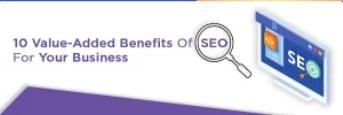than only 25% of the web. According to another Google study, when page load time increases from 1 to 3 seconds, the likelihood of a bounce increases by 32%
Implications Of Site Speed:
1.Exem pla ry User Experience ( UX) :

The user experience (UX) describes how a person interacts with and has meaningful and relevant experiences with a product, system, service, or application. It plays an important role in converting a visitor into a buyer by providing positive experiences such as ease of access, how well the system works, how simple it is to navigate the website, and how relevant the content is.
Will you make a purchase from a website where the little circle keeps spinning? If the answer is no, you understand how crucial it is for a business to provide fast speed. When a page takes too long to load, it hurts the user experience (UX), which can make visitors less likely to come back. According to one study, 40% of people abandon a website completely if it takes more than 3 seconds to open, while 47% of users expect it to load in less than 2 seconds.
2. Slow Loading Times Indicate A Low SEO Ranking:

Page speed is directly proportional to SEO ranking, increasing bounce rates, and decreasing time spent. It is a well- known fact that for your website to rank higher on a google search ranking the page’s performance must be adjusted for competition.

3. Speed Affects Conversion: Speed is the time it takes for a website to load a page after a user clicks on the link on a search engine results page (SERP). Google has a tool for evaluating loading time called Page Speed Insights, which adds credence to the assertion that webpage load speed is a ranking determinant.
Any website’s purpose is to convert potential purchasers into committed customers. However, according to a report, one-second delay in loading time might result in a 7% loss in conversions.
Many studies have revealed that one of the leading causes of visitor departure is slow website page load speed

The percentage of users who leave a specific page after visiting any number of pages on a website is referred to as the “exit rate.” If a website takes more than 4 seconds to load, 75% of users will abandon it.

4. The Bounce Ra te: Bounce rate is a web traffic measurement phrase used in Internet marketing. It displays the percentage of site visitors who arrive, browse a few pages, then leave without viewing any more.


The average bounce rate for most websites is between 26% and 70% 20% to 45% for e-commerce and retail websites, and 25% to 55% for B2B websites. When the page load time grew from one to three seconds, the risk of a bounce increased by 32% and it increased by 90% when the page load time climbed from one to f ive seconds. If a website takes up to 10 seconds to load, the likelihood of a bounce rises to 133% Will you still choose not to optimize the website’s page load now that you realize how crucial it is?
Related Posts:
